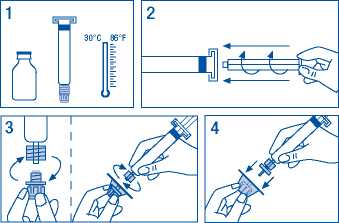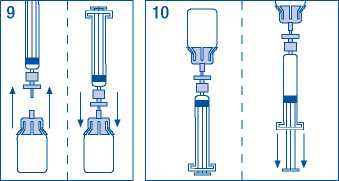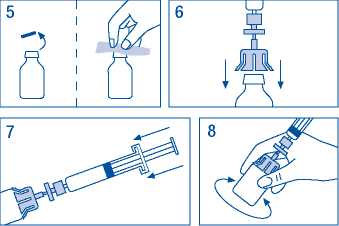Alphanate Powder For Injection
Out of date information, search anotherRTA#81 11 7/8
RTA#81 11 7/8
G
N/d
3Qoo ova
GRIFOLS
PACKAGE LEAFLET: INFORMATION FOR THE USER
8 5/8”
Alphanate®
Powder for injection
G
B
B
Human coagulation factor VIII and von Willebrand
factor complex
Please read this leaflet carefully before you start using this medicine.
- Keep this leaflet. You may need to read it again.
- If you have any further questions, ask your doctor or pharmacist.
- This medicine has been prescribed for you. Do not pass it on to others. It may harm them, even if their symptoms are the same as yours.
- If any of the side effects gets serious, or if you notice any side effects not listed in this leaflet, please tell your doctor or pharmacist.
In this leaflet:
1. What Alphanate® is and what it is used for
2. Before you use Alphanate®
3. How to use Alphanate®
4. Possible side effects
5. How to store Alphanate®
6. Further information
1. WHAT ALPHANATE® IS AND WHAT IT IS USED FOR
Alphanate® is supplied as a powder for solution for injection containing approximately 250, 500, 1000 or 1500 IU of human coagulation factor VIII per vial. Alphanate® contains no less than 400 IU of von Willebrand factor activity per 1000 IU of factor VIII activity (i.e. VWF:RCo/FVIII:C ratio > 0.4). (Note IU stands for international unit, a standard measure of activity).
Once reconstituted with the appropriate amount of solvent (water for injections), each vial contains approximately 50, 100 or 150 IU of FVIII/ml and no less than 20, 40 or 60 IU VWF/ml.
Alphanate® is one of the group of medicines called clotting factors.
Alphanate® is used for the treatment and prevention of bleeding in patients with haemophilia A (congenital factor VIII deficiency).
Alphanate® is used for the treatment and prevention of bleeding (haemorrhage) or surgical bleeding in von Willebrand disease (VWD), when desmopressin (DDAVP) treatment alone is ineffective or contraindicated.
This product may be used in the management of acquired factor VIII deficiency.
2. BEFORE YOU USE ALPHANATE®
Do not use Alphanate®
• If you are allergic (hypersensitive) to human coagulation factor VIII and von Willebrand factor complex or to any of the other ingredients of Alphanate®.
• If you have not been fully trained how to inject yourself by your doctor or haemophilia nurse.
If you want more detailed information then ask your doctor.
Take special care with Alphanate®
• Rarely you may have an anaphylactic reaction (a sudden severe allergic reaction) such as rash, tightness of the chest, dizziness, vertigo or nausea, or feeling dizzy when you are standing. If these symptoms occur, you must stop using the product immediately and contact your doctor.
• Your doctor should perform some tests to make sure that the dosage of Alphanate® you are receiving is enough to achieve and maintain appropriate factor VIII levels and thus stop any bleeding.
• If your bleeding is not controlled with Alphanate®, consult your doctor immediately. You may have developed factor VIII inhibitors, these are antibodies which block the clotting effect of factor VIII. Your doctor will perform some tests to confirm whether the inhibitors are present in your blood.
• During the treatment of the von Willebrand disease, there is a chance you may develop blood clots, particularly if you have known clinical risk factors. Therefore, your doctor should perform some tests to detect early signs of blood clots and recommend the treatment if necessary.
• Patients with von Willebrand disease, especially type 3 patients, may develop antibodies (inhibitors) to von Willebrand factor. Your doctor may perform more blood tests to confirm whether the inhibitors are present in your blood.
Special safety warning
When medicines are made from human blood or plasma, certain measures are put in place to prevent infections being passed on to patients. These include careful selection of blood and plasma donors to make sure those at risk of carrying infections are excluded and the testing of each donation and pools of plasma for signs of virus/infections. Manufacturers of these products also include steps in the processing of the blood or plasma that can inactivate or remove viruses.
Despite these measures, when medicines prepared from human blood or plasma are administered, the possibility of passing on infection cannot be totally excluded. This also applies to any unknown or emerging viruses or other types of infections.
The measures taken are considered effective for enveloped viruses such as human immunodeficiency virus (HIV), hepatitis B virus and hepatitis C virus. The measures taken may be of limited value against non-enveloped viruses such as hepatitis A virus and parvovirus B19. Parvovirus B19 infection may be serious for pregnant women (foetal infection) and for individuals whose immune system is depressed or who have some types of anaemia (e.g. sickle cell disease or haemolytic anaemia).
Your doctor should recommend that you consider vaccination against hepatitis A and B if you regularly receive human plasma-derived factor VIII products.
It is strongly recommended that every time you receive a dose of Alphanate® the name and batch number of the product are recorded in order to maintain a record of the batches used.
See also section 4.
Using other medicines
Please tell your doctor or pharmacist if you are taking or if you have recently taken any other medicines, including medicines obtained without a prescription. No interactions of Alphanate® with other medicines are known.
Do not mix Alphanate® with any other medicines that you receive by injection.
Pregnancy and breast-feeding
Based on the rare occurrence of haemophilia A in women, experience regarding the use of FVIII/VWF complex during pregnancy and breast-feeding is not available.
Ask your doctor or pharmacist for advice before taking any medicine.
Driving and using machines
Alphanate® has little or none effect on your ability to drive and use machines.
3. HOW TO USE ALPHANATE®
Reconstitute the product as described at the end of this leaflet (please see pictograms on the back of the leaflet). The product must be given by intravenous route. The administration rate should be 3 ml/min and never more than 10 ml/min to avoid undesirable side effects. Inject Alphanate® immediately after reconstitution.
The amount of Alphanate® you should use depends on many factors, such as your weight, your clinical status and the type and severity of bleeding. Your doctor will calculate the dose, the frequency and the intervals of administration of Alphanate® in order to reach the necessary level of factor VIII or von Willebrand factor in your blood.
Your doctor will tell you the duration of your treatment with Alphanate®.
You will be given full training before using Alphanate® without the hospital supervision. Please refer to all your training materials or contact your local haemophilia centre for more information. You should not self-administer Alphanate® alone: always have a responsible adult present.
There are insufficient data from clinical trials to recommend the use of Alphanate® in children less than 6 years of age for the authorised indications.
If you use more Alphanate® than you should
No cases of overdose with Alphanate® have been reported. However, if you have used Alphanate® more than required, consult your doctor or pharmacist immediately.
If you forget to use Alphanate®
Proceed immediately with the following dose and continue at regular intervals as directed by your doctor. Do not take a double dose to make up for a forgotten dose.
4. POSSIBLE SIDE EFFECTS
Like all medicines, Alphanate® can cause side effects, although not everybody gets them.
On rare occasions, you may have some of the following side effects after the administration of Alphanate®. Please contact your doctor immediately if you experience:
• itching, local reactions at the injection site (e.g. burning and transitory reddening)
• allergic reactions (e.g. tightness of the chest/ feeling unwell, dizziness, nausea and slight drop of blood pressure than can make you feel dizzy when you are standing)
8 5/8”
• fever
• faster heart beat (tachycardia).
Occasionally an anaphylactic shock may occur. If you observe any of the following symptoms during the injection/perfusion, interrupt the injection/ perfusion and contact your doctor immediately:
• tightness of the chest/feeling unwell
• dizziness
• slight hypotension (slight drop of blood pressure with dizziness when you are standing)
• nausea
Allergic reactions to the components of the product cannot be totally excluded. The formation of neutralising antibodies of factor VIII (inhibitors) is a well-known complication in the treatment of patients with haemophilia A. Study results show that first time users of factor VIII are mainly affected. You will be carefully monitored for the development of these inhibitors.
There is a chance of blood clots, particularly if you have known clinical risk factors.
If any of the side effects become serious, or if you notice any side effects not listed in this leaflet, please tell your doctor or pharmacist.
5. HOW TO STORE ALPHANATE®
Keep out of the reach and sight of children.
Do not store above 30 °C. Do not freeze. Protect from light.
Do not use Alphanate® after expiry date which is stated on the vial label and carton after EXP.
Do not use Alphanate® if you notice the solution is cloudy or has deposits. Generally the solution is clear or slightly opalescent. If the solution is discoloured or cloudy discard it.
Reconstituted Alphanate® has a shelf life of 3 hours at 25 °C.
Any unused product or waste material should be disposed of in accordance with local requirements. Medicines should not be disposed of via wastewater or household waste. Ask your pharmacist how to dispose of medicines no longer required. These measures will help to protect the environment.
6. FURTHER INFORMATION
What Alphanate® contains
The active substance is human coagulation factor VIII and von Willebrand factor complex.
Alphanate® is presented as powder for solution for injection containing approximately 250, 500, 1000 or 1500 Ill human coagulation FVIII per vial and not less than 400 IU of VWF/1000 IU FVIII. The product is reconstituted with 5 ml of water for injections for the presentations of 250 and 500 IU or 10 ml of water for injections for the presentations of 1000 and 1500 IU The other ingredients are albumin, histidine and arginine.
What Alphanate® looks like and contents of the pack
Vial containing white or pale yellow powder and syringe with water for injections (solvent). Presentations:
Alphanate® 250 IU (250 IU/5 ml)
Alphanate® 500 IU (500 IU/5 ml)
Alphanate® 1000 IU (1000 IU/10 ml)
Alphanate® 1500 IU (1500 IU/10 ml) PL 12930/0015 Water for Injections PL 4447/0016
Pack size: 1 lyophilised vial, 1 syringe pre-filled with solvent and accessories (vial adaptor, filter, 2 alcohol swabs and butterfly needle).
Not all pack sizes may be marketed.
Marketing Authorisation Holder and Manufacturer
Marketing Authorisation Holder:
Instituto Grifols, S.A.
Can Guasc, 2 - Parets del Valles
08150 - Barcelona
SPAIN
Manufacturer:
Grifols Biologicals Inc.
5555 Valley Boulevard
Los Angeles, California 90032
USA
This leaflet was last approved in
Instructions for use/handling
Follow these instructions unless otherwise indicated
by your doctor.
Left-over product must never be kept for later use, nor
stored in a refrigerator.
To prepare the solution:
1. Warm the vial and syringe but not above 30 °C.
2. Attach plunger to syringe containing solvent.
3. Remove filter from packaging. Remove cap from syringe tip and attach syringe to filter.
4. Remove vial adaptor from packaging and attach to syringe and filter.
5. Remove cap from vial and wipe stopper with swabs provided.
6. Pierce vial stopper with adaptor needle.
7. Transfer all solvent from syringe to vial.
8. Gently shake vial until all product is dissolved. As with other parenteral solutions, do not use if product is not properly dissolved or particles are visible.
9. Briefly separate the syringe/filter from vial/ adaptor, to release the vacuum.
10. Turn the vial upside down and draw the solution into the syringe.
11. Prepare injection site, separate syringe and inject product using the butterfly needle provided. Injection rate should be 3 ml/min into a vein and never more than 10 ml/min to avoid vasomotor reactions.
Do not re-use administration sets.


11

r

P - 3